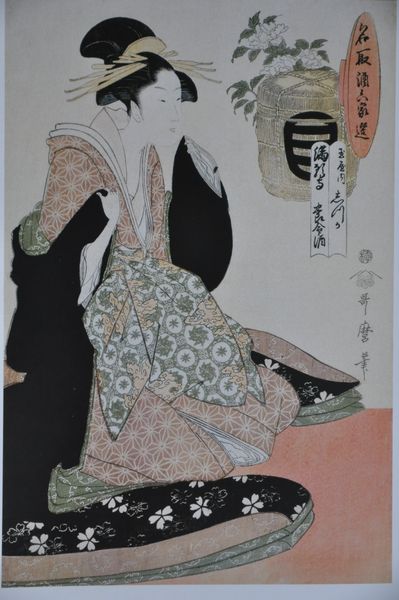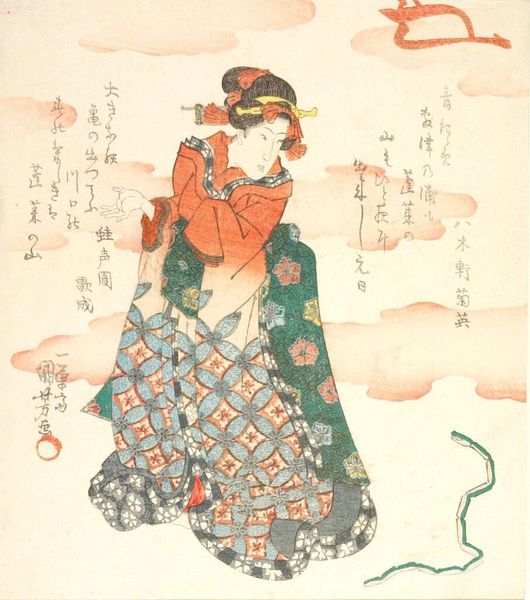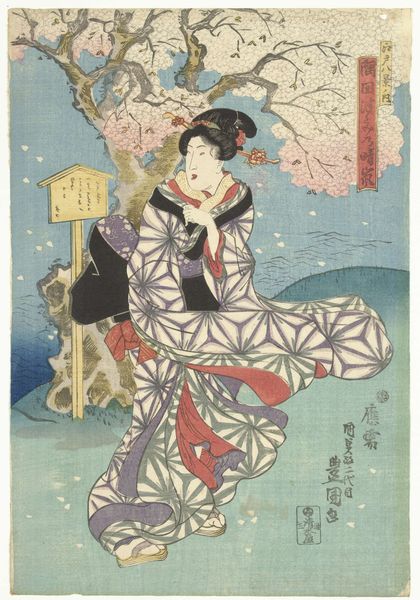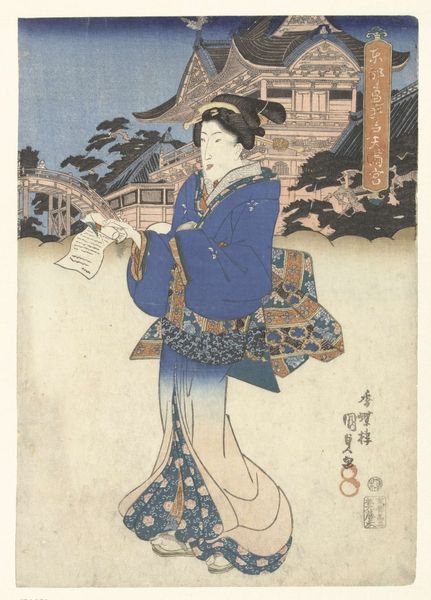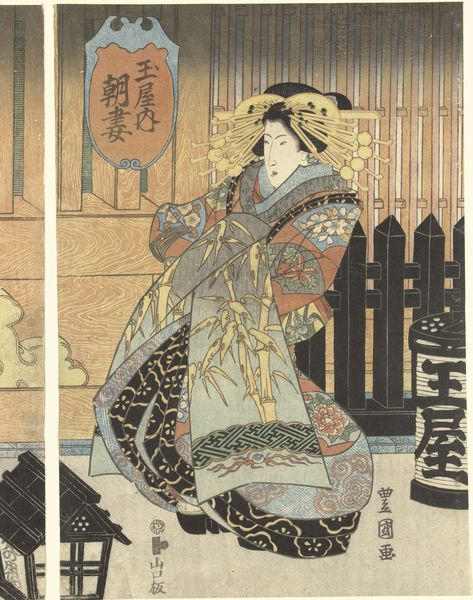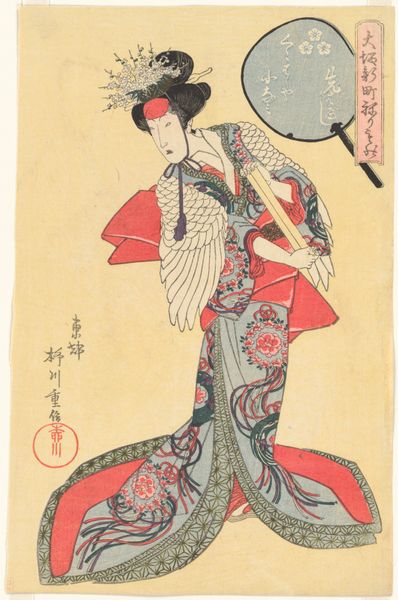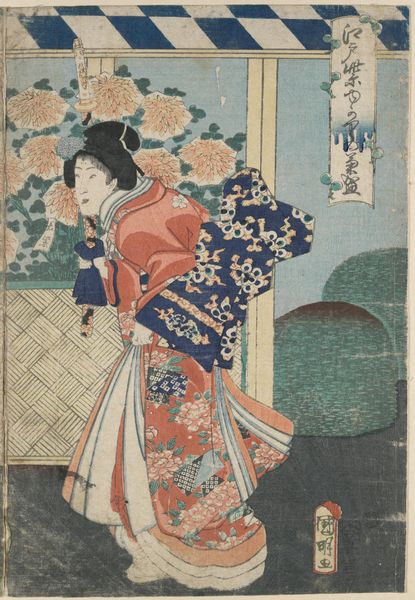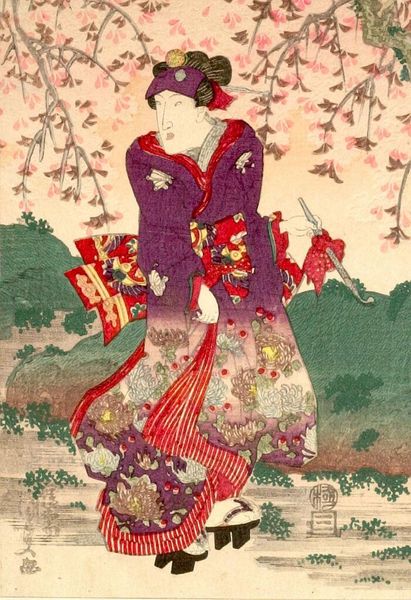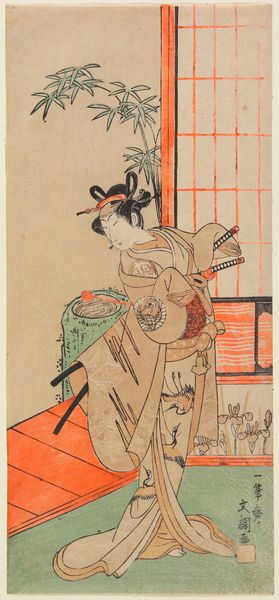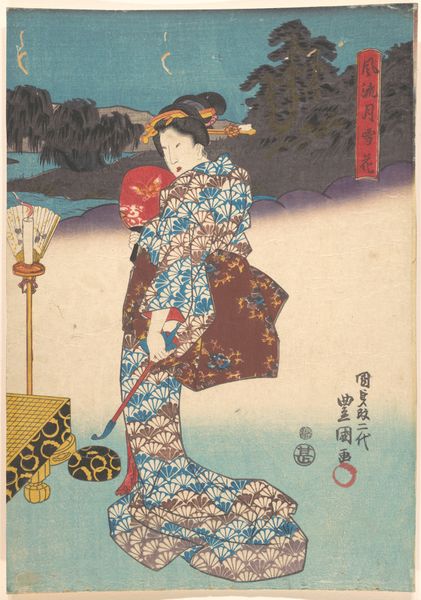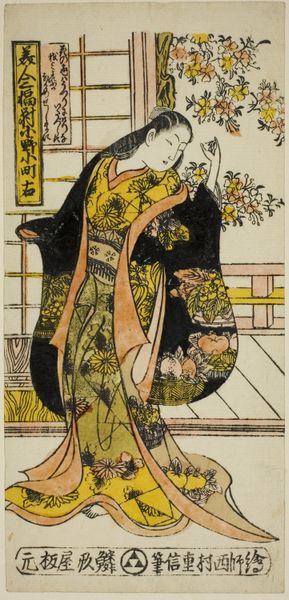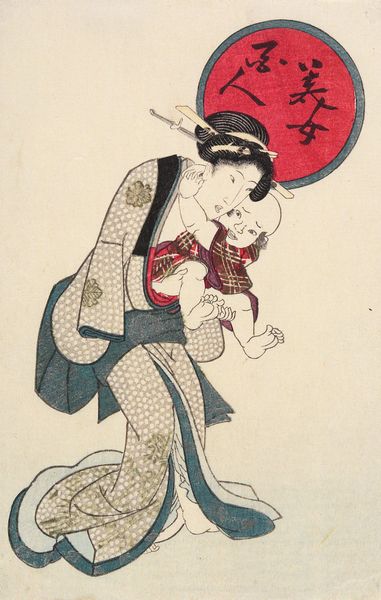
print, woodblock-print
#
portrait
# print
#
asian-art
#
ukiyo-e
#
figuration
#
woodblock-print
#
genre-painting
Copyright: Public domain
Editor: Here we have Keisai Eisen’s "No. 2 (Ni) from the series Popular Indigo Clothing (Ryuko ai shitate)," a woodblock print from around 1835. The indigo hues and delicate lines give it a very serene feeling. What strikes you about this work? Curator: I'm immediately drawn to the materiality and production of this ukiyo-e print. Consider the process: each color block carved and carefully aligned. And indigo, a dye deeply connected to trade and class in 19th-century Japan. Editor: That's fascinating. So, the indigo isn’t just an aesthetic choice? Curator: Absolutely not. "Popular Indigo Clothing"—it points to the burgeoning consumer culture. These prints weren't just art; they were commodities showcasing fashionable textiles, connecting art to the everyday lives and aspirations of the merchant class. Note how the pattern on her kimono suggests access to refined crafts and emerging production capabilities. Do you see how her garb places her in a particular class strata? Editor: Now that you mention it, the way her kimono drapes and the specific design does seem to suggest a level of affluence. How does the choice of woodblock print influence the art’s interpretation? Curator: Woodblock printing allowed for mass production and circulation. It’s an accessible art form, far removed from the elite painting traditions. Think of it as an early form of advertising or a fashion magazine, capturing the zeitgeist through reproducible imagery. Editor: I hadn't thought about it in terms of its social reach before. Curator: The materials and method are integral to its meaning. This piece captures not just a pretty face, but a moment in the evolution of Japanese material culture and the expanding marketplace of fashion. Editor: Thank you. It’s made me think differently about how materials and techniques directly connect to the subject matter itself.
Comments
No comments
Be the first to comment and join the conversation on the ultimate creative platform.

